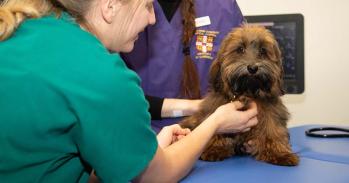A new partnership is set to give nanotechnology researchers at the University of Cambridge access to the latest electron-beam imaging equipment.
A new partnership is set to give nanotechnology researchers at the University of Cambridge access to the latest electron-beam imaging equipment.
A new partnership is set to give nanotechnology researchers at the University of Cambridge access to the latest electron-beam imaging equipment.
The Centre for Advanced Photonics and Electronics (CAPE) is joining forces with the global nano-manufacturing supplier Carl Zeiss SMT.
The deal means that scholars will have access to Carl Zeiss' instruments and expertise in electron beam imaging, including two state-of-the-art scanning electron microscopes, which the firm has donated to the Centre.
CAPE, which is part of the Department of Engineering, is a unique partnership between the University and four major industrial partners that develops and commercialises new materials, components and systems in the field of electronics and photonics. It has already attracted international attention not only for its work, but also as a model of university-industry collaboration.
Carl Zeiss will become the CAPE Associate for Electron Beam Imaging. Electron microscopy allows the user to see the fine detail of materials and probe their composition, making it immensely valuable for the study of nanostructures.
The very first successful scanning electron microscope was built at Cambridge under the leadership of Professor Charles Oatley in 1951, and the University also has a long-standing connection with Carl Zeiss. In the late 1950s the Cambridge Instrument Co. was licensed to manufacture these microscopes, and one of Oatley's students joined the company to design a commercial version of the instrument, which was a great success. Later the company was acquired by Carl Zeiss. Collaborations between the University and the company have continued ever since.
Professor Bill Milne, Director of CAPE, said: "The addition of Carl Zeiss SMT as our new Associate Partner will greatly enhance our capability, given our large and growing interest in a variety of different nanostructure materials."
Dr Stefan Traeger, General Manager of the Cambridge branch of Carl Zeiss SMT said: "The first commercially available scanning electron microscope in 1965 was a result of the strong link between the University and Cambridge Instruments at that time. I am certain that with this association our projects will result in exciting solutions for the nano-age world."
This work is licensed under a Creative Commons Licence. If you use this content on your site please link back to this page.





